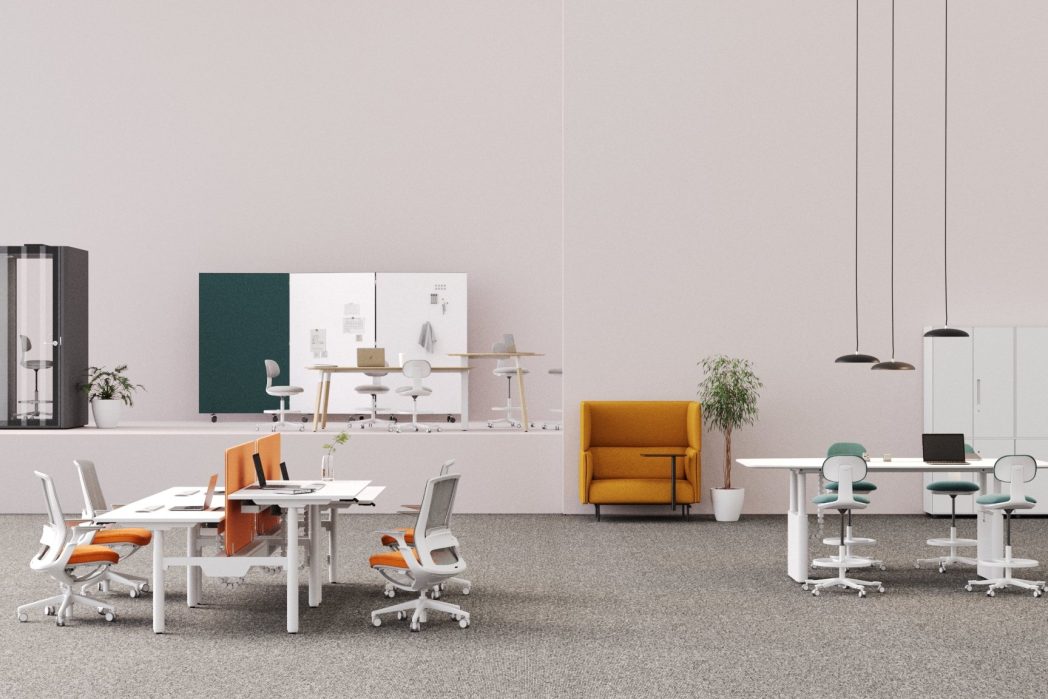Activity‑Based Working (ABW) transforms the traditional office by matching work environments to tasks—focus, collaboration, learning, socializing and recharging—rather than assigning fixed desks.
Modern teams need more than one generic workspace. ABW breaks free of static seating models to offer a spectrum of zones—quiet pods, modular pods, learning bays, social lounges and wellness nooks—so employees can choose the setting that best fits their work mode and boost both productivity and satisfaction.
Five Workplace Challenges ABW Solves
- Static Seating Models
Assigned desks often sit empty or lock people into ineffective routines. ABW eliminates “owned” workstations, driving higher utilization and flexibility. - One‑Dimensional Layouts
Pure open‑plan can be noisy; private offices can feel isolating. ABW blends quiet focus booths, team collaboration hubs and casual social lounges for every need. - Technology Gaps
Inconsistent tech access stalls workflows. ABW ensures each zone has universal docking stations, video‑conferencing panels and wireless charging. - Shifting Team Dynamics
Project teams form and dissolve rapidly. Modular furniture and bookable zones let you reconfigure spaces in minutes—no downtime required. - Measuring Impact
Without data, you can’t optimize space. ABW leverages occupancy sensors and usage analytics to refine layouts, improve utilization and justify real‑estate investments.
From Assigned Seats to Agile Spaces
Assigning every employee a single workstation made sense in the era of typewriters and landlines, but in our digital age it quickly becomes a straitjacket. ABW flips that model on its head: you arrive, you choose the setting—focus booth, team hub, lounge or café table—that best suits your activity, then you move on. This not only boosts real estate efficiency (no more unused desks) but also empowers individuals to work where they’re happiest and most productive.
Designing for Five Key Modes
At the heart of ABW are five work modes—Focus, Collaborate, Learn, Socialize and Recharge—each with its own design rules:
- Focus: Sound‑masked pods and single‑occupancy carrels with soft lighting to eliminate distractions.
- Collaborate: Flexible benching, writable walls and mobile whiteboards for rapid ideation.
- Learn: Small‑group seminar rooms and video‑enabled huddle areas for workshops and training.
- Socialize: Café‑style nooks, bar‑height counters and lounge seating to foster casual connections.
- Recharge: Biophilic corners, wellness pods and nap‑chill zones to help employees reset and maintain peak performance.
Well‑planned offices weave these modes together seamlessly, guiding people through a daily flow of activities without friction.
Making the Shift to an Agile workspace
Implementing ABW doesn’t have to be a seismic upheaval. Start with a pilot in one department: convert a section into mixed‑use zones, equip them with the right furniture and tech, then collect feedback. Refine your layouts before a broader rollout. Communicate clearly—provide simple guides on “where to go for what”—and train employees on new booking tools. Finally, lean on data: monitor zone usage, tweak occupancy ratios, and iterate continuously.
Ready to future‑proof your space? Our ABW experts are here to help you design a truly dynamic, people‑first office.

Leave a Reply